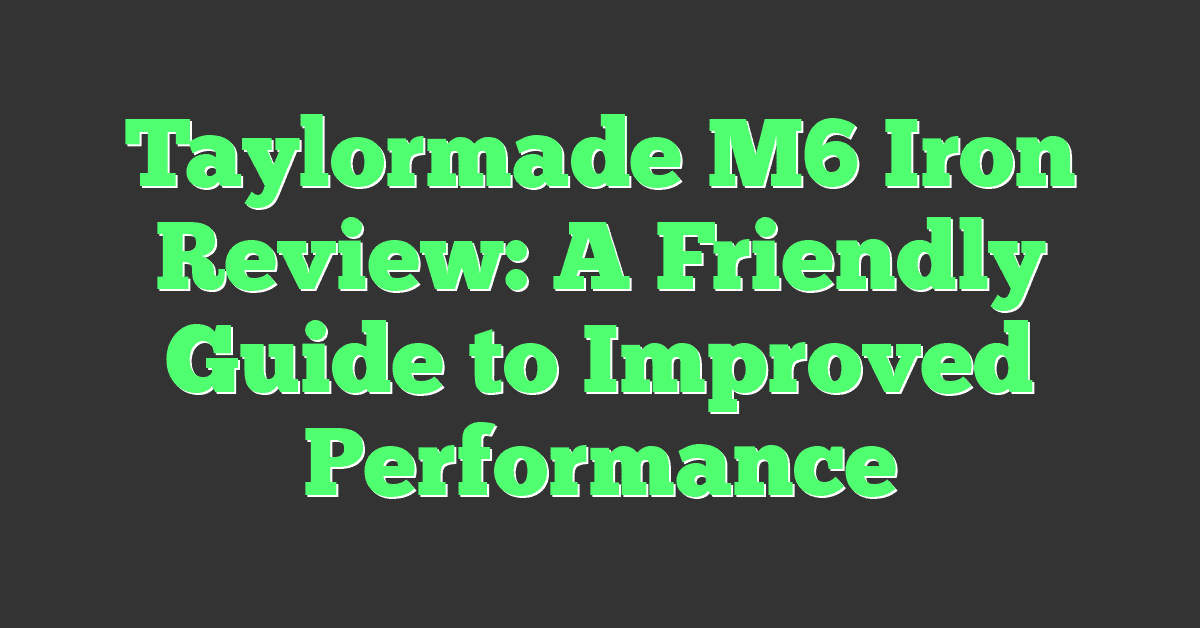Golfing with a sore back can feel like you’re swinging through quicksand – uncomfortable and frustrating. But don’t hang up your clubs just yet! You’ve still got a fairway to go before calling it quits.

Understanding how to adjust your game can make all the difference. With a few tweaks to your approach and some smart strategies, you’ll be back on the greens without aggravating your achy back.
So, let’s ease into it and explore how you can keep your swing smooth and your spine happy. After all, there’s no need to sacrifice your love for the game because of a little back pain.
Assessing the Situation: Is it Safe to Golf?
Before you even think about teeing up, you’ve got to understand whether it’s safe to swing a club with your current back woes. Listen to your body. Mild discomfort that ebbs as you move might be manageable, but sharp, persistent pain is a red flag. You risk turning a short-term niggle into a long-term layoff.
Consider consulting a sports medicine specialist or a physical therapist, especially if your pain is chronic or severe. They can provide a professional assessment and tailor a plan to suit your needs. Remember, pushing through severe pain isn’t tough; it’s unwise.
When you’re out on the course, be smart about your limitations. If you’ve decided it’s safe for you to play, start with some gentle stretching to loosen up your muscles. This isn’t about making big swings; it’s about keeping your body primed and your movement fluid.
Pre-Game Warm-Up
- Start with dynamic stretches
- Focus on mobility not intensity
- Keep movements golf-specific
Adjust your expectations and set realistic goals for your game. You’re not out to set a personal best; you’re aiming to enjoy the game without exacerbating your pain. So instead of smashing that driver, maybe play a conservative fairway wood or a long iron to ensure a smoother swing that’s kinder to your back.
- Shorten your backswing to reduce torque
- Focus on quiet feet to minimize spinal rotation
- Use a higher loft club for easier ball flight
Monitoring your body’s response during the round is crucial. If you notice increased pain or discomfort that doesn’t subside with rest, it’s time to call it a day. There’s always another round to play, but only if you preserve the health of your back.
Listen to Your Body: Recognizing the Warning Signs
When you’re on the course, tuning in to your body’s signals is crucial, especially when you’re managing a sore back. It’s vital to recognize when discomfort shifts from typical to red-flag territory. During your round, certain warning signs demand immediate attention. Be on the lookout for these:
- Sharp, localized pain: Unlike a dull ache, sharp pain can be a sign of significant irritation or injury.
- Numbness or tingling sensations: This could indicate nerve involvement, never something to play through.
- A spike in pain levels: A sudden increase could signify that you’re pushing too far.
Your years on the greens have taught you that golf isn’t only about skill; it’s about smarts. Trust your experience – if a particular shot or stance doesn’t feel right, don’t do it.
Adapting Your Play should be second nature. Maybe you’re used to attacking the course, but now’s the time to strategically manage it. Opt for clubs that allow for easier swings, and consider:
- Using a higher lofted driver to make it easier to hit the ball with a reduced swing speed.
- Selecting irons with more flexible shafts that can offer a larger sweet spot.
Keep the game within the boundaries that your body sets. Hydration is also more than a tip; it’s a necessity. Staying hydrated helps your muscles perform better and reduces the risk of cramping—a surefire way to spoil a good round.
As you navigate the fairways and greens pay as much attention to your body’s cues as you do to the subtleties of the course. That twinge on your last swing might be telling you to ease up or adjust your approach.
During the game, regular checks on your physical state help you gauge when to press on and when to ease up. Remember, playing through pain isn’t a testament to your resolve. It’s about playing smarter, not harder.
Warm Up, Stretch, and Prep Before Teeing Off
Before you even think about placing that tee in the ground, your body needs a solid warm-up routine. Starting cold is a surefire way to aggravate your back further. Remember, golf isn’t just a skill game; it’s a sport that demands physical readiness.
First things first, get your blood flowing with light cardio for about 5 to 10 minutes. You could briskly walk around the practice green or even do some gentle jogging on the spot. Whatever gets your heart rate up without stressing your back is key.
Next up are stretches, but not just any stretches – dynamic stretches. These are crucial as they prepare your body for the motion and strains of the game:
- Gently swing a club back and forth, gradually increasing the range of motion.
- Perform torso twists while holding the club behind your neck, to engage your core and back muscles.
- Shoulder circles and arm stretches will loosen up the upper body, reducing tension during your swing.
Once you’re feeling limber, move onto some golf-specific prep. Since you’re working with a sore back, focus on movements that will be used during your swing:
- Practice slow-motion swings to reinforce muscle memory and establish a smooth tempo.
- Use short swings with a wedge or short iron to concentrate on form rather than power.
- Emphasize staying balanced and avoiding any jerky motions that could jar your back.
You’ll also want to prep your equipment. Make sure your clubs are suited to your current state; sometimes switching out a stiff driver for something with more give can make all the difference. Additionally, ensure your golf shoes provide the proper support and consider a back brace or support if recommended by your physician.
This tailored warm-up isn’t just about protecting your back; it’s about setting the stage for a successful round. When your body’s prepped, you’ve already taken the first step towards shooting a lower score. Remember, your performance isn’t just about how you handle the clubs, it’s equally about how you handle your health.

Swing Modifications for a Sore Back
« Unlock Life’s Secrets on the Green: What Golf Really Teaches Us
Is Your Golf Swing Harming Your Shoulder? Prevent Bursitis Now »
When your back’s not at its best, it’s critical to modify your swing to keep playing without making things worse. Shorten your swing to maintain control and reduce stress. By stopping the club at shoulder height on your backswing, you’ll lessen the rotation and the strain on your back.
Grip down on the club for more control. This slight change can lead to less torque and a smoother swing. Think about slower, controlled movements. Power in your swing is important, but not at the cost of aggravating your injury. Focusing on tempo can help you hit the ball solidly without a full power swing.
Here are some changes to consider:
- Reduce your lower body motion, especially your hip turn. This helps in preventing excessive spinal rotation.
- Limit your follow-through height. A full follow-through can put additional stress on your back.
- Stand taller at address. This decreases the inclination to bend over too far, which can strain your back.
Remember, it’s all about adjusting to your body’s needs. For instance, you may find that swinging with a slightly open stance helps reduce back tension. This position can reduce the amount of rotation required in both your backswing and follow-through.
Last, check your equipment. If your clubs are too long or your grips too thin, this might cause you to hunch or grip too tightly, further straining your back. Opt for clubs that allow you to maintain a comfortable posture throughout your swing.

Engaging your core throughout your swing can also provide stability and support for your back. Work on incorporating core strengthening exercises into your warm-up routine for added protection. Keep monitoring your body and make small adjustments as needed. As tedious as it may sound, it’s these little tweaks that keep you in the game, letting you continue to enjoy golf despite a sore back.
Choosing the Right Equipment to Support Your Back
Golfing with a sore back requires not just adjusting your technique but also making sure your equipment doesn’t add unnecessary strain. The club you’re swinging could be the difference between a fulfilling round and additional back pain. As a lifelong low-handicap golfer, I’ve learned the importance of using the right gear to compliment physical limitations.
Lightweight clubs are essential. They require less effort to swing and reduce the stress transmitted to your back. Today’s market offers clubs made from materials like titanium and graphite that are designed to be both sturdy and light. A good fit ensures that you’re not compensating for a club that’s too heavy or too long, which can throw off your swing mechanics and worsen back pain.
When you’re browsing for new clubs, check the following features:
- Shaft Flexibility: A more flexible shaft can absorb the shock during the swing, reducing the impact your back feels.
- Grip Size: Grips that are too small or too large can affect your swing technique and lead to extra tension in your back.
- Club Length: Shorter clubs can lead to a hunched posture, while longer clubs might cause over-extension. Both scenarios strain your back.
Why not consider a golf bag with a built-in stand? This kind of bag allows for easy access to your clubs without the need to bend down repeatedly. Pull carts or electric caddies can be fantastic tools as well; they take the load off your back and let you enjoy the game without hauling your clubs around the course.

| Feature | Benefit for Sore Back |
|---|---|
| Lightweight Clubs | Reduces Swing Effort |
| Flexible Shafts | Absorbs Shock |
| Proper Grip Size | Optimizes Swing |
| Correct Club Length | Prevents Poor Posture |
Don’t forget to reassess your golf shoes. They should provide stability and support, helping to prevent slips that could jar your back. Soft spikes or spikeless golf shoes also help in keeping the feet stable without too much torque during your swing.
Strategies to Minimize Back Pain on the Golf Course
When you’re out on the links with a sore back, your priority is to minimize pain without compromising your game. Smart strategizing on the course is key to ensuring you can play all 18 holes.
First up, let’s talk club selection. Don’t let your ego dictate which club you pull from the bag. Opt for a higher lofted club to hit softer shots; this puts less stress on your back. Consider using your 3-wood for ground shots; it travels nearly as far as your driver with less required torque.
Next, pay attention to your stance. You want a solid foundation that supports your swing but doesn’t overtax your back. Make sure you’re bending from your hips, not your back. Maintain a slight knee bend to ensure flexibility and balance.
- Focus on keeping your feet flat during the swing
- Limit your hip rotation to further safeguard your back
- Use a wider stance for more stability
When approaching your ball, especially if it’s on an incline, take the time to position yourself so your back remains as straight as possible. Hitting from uneven lies without proper adjustment can spell disaster for your sore back.
Here’s a pro tip you might not have considered: the short game. Sharpen your chipping and putting to reduce the number of full swings in a round. Getting proficient with a wedge or putter not only reduces strain but can also shave strokes off your score.
Finally, always walk the course at a comfortable pace. If you prefer riding, consider walking between shots to keep your muscles loose. If pain arises, don’t push through it. Take a break or call it a day if necessary. Remember, it’s better to play smart today so you can tee up again tomorrow.
Recovering After a Round of Golf with a Sore Back
Playing golf with a sore back is no small feat; it’s commendable that you’re staying active despite the discomfort. However, managing your post-round routine is crucial for recovery and getting back on the course sooner.
Posture and Stretching
First and foremost, it’s imperative to maintain good posture as you remove your golf shoes and pack up your gear. Slouching or bending awkwardly can negate all the careful movement you practiced during the round. Once you’re in a comfortable space, engage in a series of gentle stretches designed for the lower back. These can include pelvic tilts, knee-to-chest stretches, and lying spinal twists. Hold each position for about 20 seconds and feel the tension in your back dissipate.
Hydration and Nutrition
Don’t underestimate the power of hydration and proper nutrition in your recovery process. Make sure to drink plenty of water or an electrolyte-replenishing beverage post-round to aid in muscle recovery. Additionally, consuming foods rich in anti-inflammatory properties, like cherries, blueberries, salmon, and leafy greens, can help reduce soreness.

Ice and Heat Therapy
Another technique to consider is ice and heat therapy. Applying an ice pack to your back for short intervals can help manage any acute inflammation you might have. After the initial 24-48 hours post-round, you can switch to heat therapy which promotes blood flow and can further relax sore muscles.
Controlled Movements and Exercises
Lastly, engage in controlled movements or exercises that specifically target your back. These can include:
- Cat-Cow stretches for spine flexibility
- Bridges to strengthen the lower back
- Wall sits to engage core and back muscles without strain
Remember, you’re not aiming for intensity here—the goal is to stimulate the muscles gently and aid in the healing process. Don’t rush the movements; focus on form and breathing.
By incorporating these steps into your post-golf routine, you’re not just treating the effects of playing with a sore back, but also reinforcing your body’s ability to handle the stress of golfing. Keep tuned to your body’s signals and adjust accordingly. With time and care, you can look forward to many more rounds with reduced discomfort and improved performance.
Conclusion











